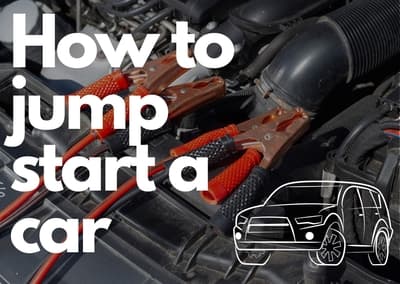How to jump start a car
Many drivers have experienced the nightmare of going to start their car, only to find that the battery has died and the car is lifeless. The reason for this could be a fault in the battery system causing not only the battery to drain when stationary, but also for it not to recharge when driving. However, the reason could be that you simply left the radio on overnight.
Related: Order a new car battery to be fitted
Nevertheless, the only ways to get power to your car would be to replace the battery or give your vehicle a jump start. With a pair of jump leads being more accessible than a new car battery, it is important that you know how to jump start a car.

Equipment needed for a jump start
To perform a jump start only two pieces of equipment are needed. Firstly, you will need another battery with a sufficient amount of power. A battery in another car is what is most commonly used. Secondly, you will need jump leads that are attached to your dead battery and the live battery in the other car to transfer the power into the dead battery. Jump leads consist of a red and a black lead with crocodile clips on both ends.
Performing the jump start
Now you have all of your equipment, we are going to run down how to jump start your car.
Step 1
The first step is to park the car with the live battery in close proximity to the car with the dead battery, with both of the cars in neutral and with the handbrakes on. Before attaching the jump leads, it is very important that you ensure that the dead battery is not damaged and leaking any fluid.
Step 2
Step 2 is to place the jump leads correctly to both of the batteries. First, attach the red cable to the positive terminal of the dead battery and the positive terminal of the live battery. With the red cable it is important that it is not touching any other metal, to be effective. A common mistake will be to connect the black cable to the batteries in a similar fashion to the red cable, however, you connect one end of the black cable to the negative terminal of the live battery, and the other end clip to the metal bracket away from the dead battery. It is important that you do not clip the black cable onto the dead battery or any other metal moving parts.
Step 3
Once all the cables are connected you should leave them connected for about 5 minutes. At this point both of the batteries are equalising, five minutes should be enough time for this to take place.
Step 4
Once you have waited five minutes, you can turn the car engine on with the live battery. It is best to let the engine run for a minute, then you can turn the engine on in the car with the dead battery.
Step 5
Now both the engines are running, you need to give time for the dead battery to recharge. Wait for a further 10 minutes, observing both the cars to ensure that everything is working correctly.
Step 6
After waiting for 10 minutes, this should have been enough time for the dead battery to recharge. Now all you need to do is pack away the jump leads in the proper order. Firstly, whilst the engine is on, remove the black clamp attached to the car with the dead battery, without touching anything else. Next, remove the black cable from the car with the live battery. Finally, you can remove the red cables in any order.
Related: Car batteries: Cold weather hints and tips
If you have any additional trouble with your battery, do not hesitate to contact us as we are open throughout the COVID-19 lockdown. We can get you booked into one of our nationwide garages, with a new flexible Payment Assist payment option available to our customers.
Did you enjoy this blog post? |26 people found this review helpful



 Sign up for SPECIAL OFFERS
Sign up for SPECIAL OFFERS
